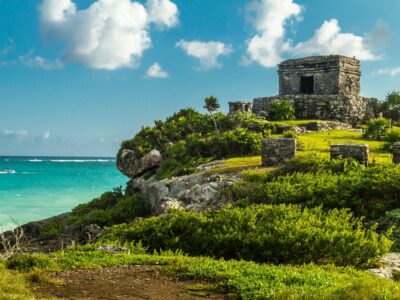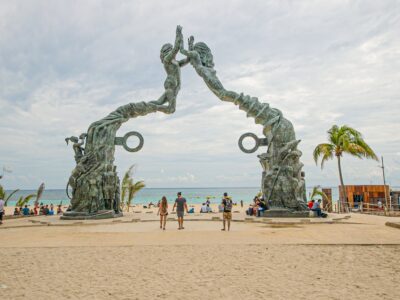Hundreds of faithful in Santiago Atitlán, Guatemala, celebrated Good Friday with the procession of the Buried Lord.
Hundreds of Catholic faithful celebrated the procession of the Buried Lord this Good Friday in the indigenous village of Santiago Atitlán, in southwestern Guatemala. This procession merges with the procession of the Mayan deity Rilaj Mam, also known as Maximón, in one of the most important processional corteges of Holy Week.
The image of Christ, placed inside a glass coffin with gold details, departed this Friday from the Catholic church of Santiago Atitlán, founded in 1547, to pass through dozens of fruit and sawdust carpets designed by the Catholic faithful along its route.
“Every year we make sawdust carpets for this procession, which we consider the most profound, according to our religious beliefs, for Christ’s sacrifice for us, and it is a pleasure to see it pass over the offering we designed on the ground,” Humberto Petzey, a faithful Catholic who, along with his family, designs carpets for this procession each year, told EFE.
This image of Christ, carried by indigenous people wearing colorful red outfits with white details, crossed paths during its procession, as it does every year, with the wooden image of Rilaj Mam, a saint who, according to the Mayan worldview, is considered the creator of the universe and is a native of Santiago, a town in the Lake Atitlán basin.
The procession spends two hours stranded in front of the church atrium under the sun, as an act of penance and gratitude, according to the explanation given by the local indigenous members of the brotherhood.
As the sun begins to set, the procession ends in front of the atrium and begins its journey to the four small chapels in the town, which, according to the local Catholic view, represent the four corners of the universe.
Meanwhile, the image of Rilaj Mam, holding a tobacco cigarette in its mouth and adorned with a black jacket and hat, is carried on a stretcher by a shaman, chosen to “bear the sins of the people,” Petzey explained.
At the end of the procession, the image of Christ returns to the church, while that of Rilaj Mam returns to its brotherhood in one of the local villages, where it remains for a year until the following Holy Week.
According to Guatemalan authorities, more than 140 different processions took place in all regions of the country, and more than 150,000 foreign tourists visited during Holy Weein
The post Holy Week in Guatemala, syncretism at its finest first appeared on The Yucatan Times.














